QR Codes for Engagement: A Comprehensive Guide for Maximizing Engagement
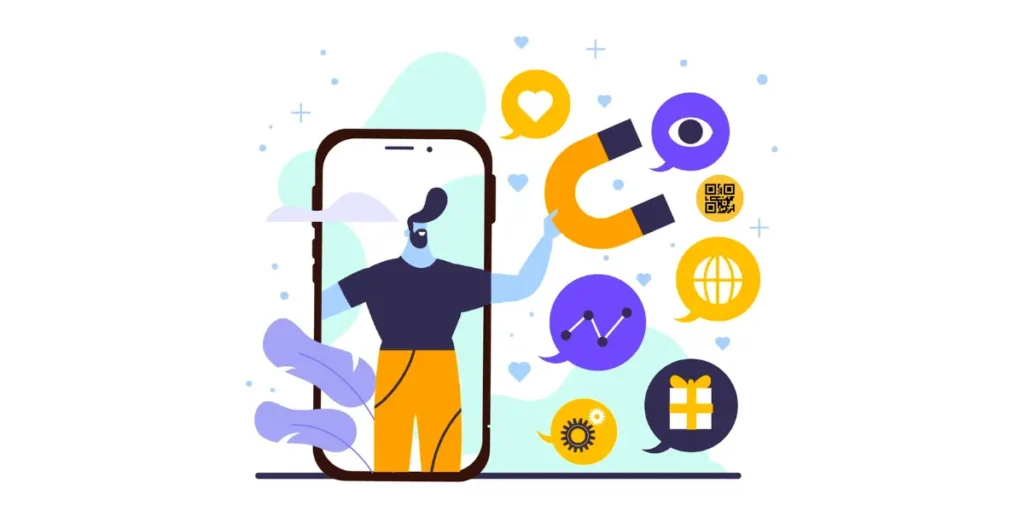
QR Codes, those common little black-and-white squares that you see everywhere these days, were first used in the automotive industry. Now, they have become a popular marketing tool.
Did you know? As of 2023, 44.6% of internet users had scanned a QR Code at least once. Source: Persuasion Nation
These codes, which smartphones can scan, contain information like website URLs, contact details, or product information.
They allow consumers to access additional content or promotions related to a product or service.
This multifunctionality has made them increasingly popular in advertising campaigns, product packaging, event promotions, and even restaurant menus.
But what exactly are QR Codes, and why have more and more marketers started using QR Codes for engagement?
Let’s begin!
A. Understanding QR Codes

QR (Quick Response) Codes are essentially two-dimensional barcodes that store information. They work like a barcode but can store much more information.
When scanned using a smartphone camera app, they can redirect users to websites, display text messages, launch videos, or even trigger actions like adding contacts or joining Wi-Fi networks.
Did you know? QR Code usage among smartphone users worldwide reached 83% in 2022. Source: Wifitalents
Originally developed in the automotive industry in Japan in 1994 by Denso Wave Corporation, QR Codes were used to track vehicle parts during manufacturing.
However, their usage has expanded dramatically over the years, especially in marketing.
Businesses use QR Codes to provide customers with additional information about products, offer discounts or promotions, or even facilitate quick and easy payments.
The Rise of QR Codes in Modern Marketing
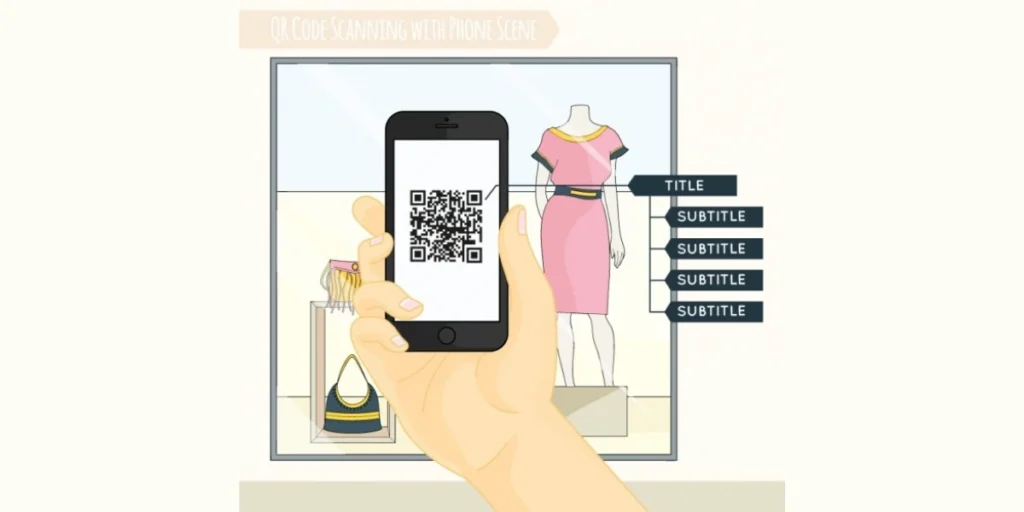
QR Codes had a somewhat slow burn after their initial invention. They were mostly used in industrial applications and lacked the widespread adoption of barcode scanners.
However, several factors played an important role in the late 2000s and early 2010s to create a perfect storm for QR Codes to become a marketing go-to strategy.
The widespread adoption of smartphones, particularly those with built-in cameras, eliminated the need for dedicated QR Code readers.
This convenience factor made scanning codes effortless and accessible to a massive audience.
Marketers now leverage their ability to bridge the physical and digital worlds, seamlessly integrating offline experiences with online content.
B. Applications of QR Codes in different sectors: a bridge between physical and digital

QR Codes are breaking out of their niche! Now, businesses across all sectors are using them to create dynamic experiences and connect with their audiences in innovative ways.
Let’s dive in and see how!
1. Retail: Bridging the gap between products and customers
I. Product information and reviews
Say you are browsing a clothing rack and want to know more about a specific garment’s material or care instructions.
For instance, cosmetic companies use QR Codes quite often to provide ingredient information or demo videos.
Here, a QR Code on the tag can lead you to a detailed product page with care tips, size charts, and even customer reviews – all at your fingertips.
Did you know? 87% of retailers plan to use QR Codes for shopping by the end of 2021. Source: Wifitalents
Pepsi collaborated with Beyoncé, showcasing the power of QR Codes for fan engagement. Limited-edition cans featuring her image and QR Codes were released.
Fans could scan the code to access exclusive behind-the-scenes content and sneak peeks at her music videos, creating a deeper connection with the artist.
II. Promotions and Discounts
Just like using a QR Code for product information and reviews, imagine seeing eye-catching QR Codes on product packaging or store displays.
They can unlock exclusive promotions or discounts. Scanning the code could reveal a hidden coupon code, reward points for loyalty programs, or even early access to upcoming sales.
The Little Potato Company used QR Codes for a heartwarming initiative this past holiday season.
They launched a campaign where scanning a code allowed people to enter a contest for a chance to win $1,000 worth of groceries, aiming to support families during a time of rising food costs.
2. Hospitality: Enhancing the guest experience
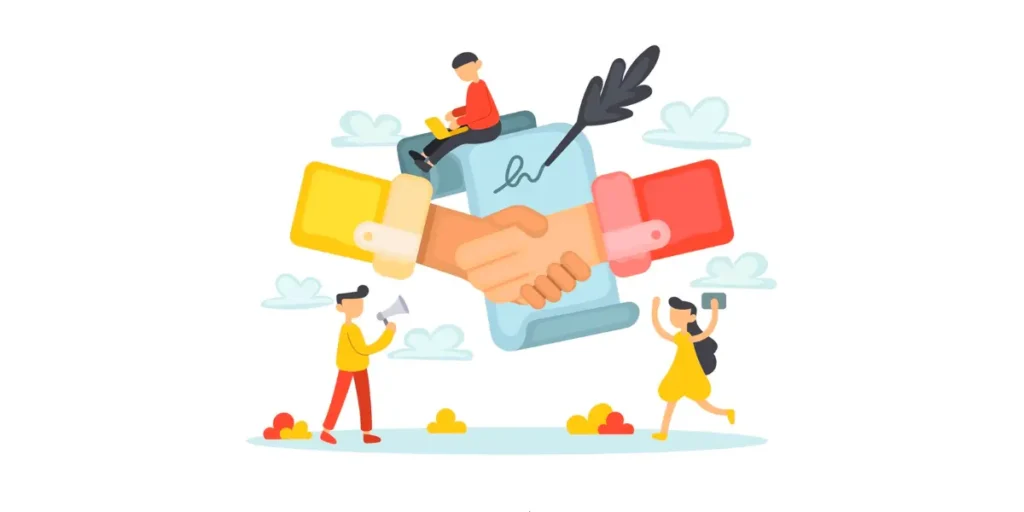
I. Menu and ordering systems
QR Codes on restaurant tables can replace bulky menus. This can save money and help promote contactless dining.
Guests can simply scan the QR Code to access the digital menu, browse photos of dishes, and even place orders directly from their phones, streamlining the whole dining experience.
II. Customer feedback and reviews
QR Codes on receipts or coasters can encourage guests to leave feedback about their experience.
This valuable data helps restaurants identify areas for improvement and showcase positive reviews, building trust with potential customers.
3. Events: Creating interactive experiences
I. Ticketing and Check-ins
QR Codes can revolutionize event ticketing. Attendees purchase tickets online with embedded QR Codes, which they then scan for a seamless check-in process. This eliminates long queues and streamlines event entry.
II. Interactive Event Experiences:
QR Codes can unlock hidden gems at events. Imagine scanning a QR code at a conference to access exclusive behind-the-scenes content, artist interviews, or even interactive games, immersing attendees in a deeper event experience.
Coachella Valley Music and Arts Festival is now known not just for its headlining performers and exuberant ambiance but also for being a pioneer in the use of modern technologies.
Coachella worked with a ticketing company in 2015 to integrate event tickets with QR Codes. The results were positive.
Attendees could breeze past the entrance, optimizing their event experience. This resulted in a 50% reduction in entry wait times and also reduced ticket fraud.
4. Education: Empowering the learning journey
I. Supplemental learning materials
QR Codes embedded in textbooks can act as portals to a world of additional learning resources.
Students can scan the code to access interactive quizzes, explainer videos, or even 3D models of complex concepts, fostering a more engaging learning experience.
II. Campus navigation
New students often face the challenge of navigating a sprawling campus. Strategically placed QR Codes linked to interactive campus maps can guide them to classrooms, libraries, or other facilities, making their first days on campus less stressful.
5. Media and Entertainment: Enhancing Audience Engagement
I. Promotional Campaigns
QR Codes are revolutionizing how media promotions connect with audiences. By scanning QR codes in movies, fans can access exclusive content such as sneak peeks, behind-the-scenes footage, or personalized messages from creators, making the experience more immersive.
II. Music and Streaming Platforms
Musicians and streaming platforms use QR Codes to promote albums, playlists, or events. A quick scan can direct users to curated playlists, artist profiles, or upcoming concert details, fostering deeper audience connections.
Example: The Indian rap reality show “Hustle” effectively integrates QR Codes during television screenings, directing viewers to YouTube videos for streaming the featured songs.
C. The benefits of QR Codes for engagement

Level up your engagement game! QR Codes are a marketing must-have, transforming passive interactions into dynamic experiences.
Here’s how they supercharge your audience interactions and why every marketer out there is looking for ways to use QR Codes for engagement:
1. Instant access to information
Imagine seeing a captivating billboard but forgetting the website address by the time you reach home. Pretty infuriating, right? Well, QR Codes eliminate that frustration.
A quick scan of a QR Code on ads, billboards, or packaging unlocks a world of information, product details, and even exclusive offers – right at your fingertips.
This is why the tourism industry leverages QR Codes extensively, offering travelers instant access to schedules, real-time updates, historical details about monuments, and much more.
2. Enhanced customer interaction
QR Codes go beyond simply providing information. They can be used to launch interactive experiences.
Think about it: you’re browsing a restaurant menu and curious about the ambiance.
Instead of waiting for a table or relying on static photos, a QR Code zaps you into a captivating 360° virtual tour, transporting you right into the heart of the establishment. In the same way, realtors use QR Codes to increase engagement by offering multimedia content and immersive property tours.
Pro Tip: If you have a brand, you use QR Codes on flyers or advertisements that link to exclusive discounts or coupons. By using unique trackable codes offered by Scanova, businesses can measure the effectiveness of their campaigns and understand customer behavior.
Similarly, scanning a QR Code on a product can unlock a treasure trove of exclusive content, from behind-the-scenes glimpses into the manufacturing process to real customer reviews offering valuable insights.
This interactive element goes beyond a simple information exchange. It fosters a sense of discovery and engagement, allowing consumers to delve deeper into your brand story and connect with your products on a more personal level.
For instance, the QR Code on the Mayan statue sparked curiosity and boosted engagement by capturing the audience’s interest.
3. Seamless integration with mobile devices
QR Codes are the perfect fit for our mobile-first world. They capitalize on the ever-present smartphone, eliminating the need for yet another app download. This frictionless experience is a goldmine for engagement.
This seamless experience encourages engagement and removes barriers to accessing your content.
Mobile marketing via QR Codes is a win-win for both you and your audience: you get valuable engagement, and they get a smooth and convenient way to explore what you have to offer.
4. Tracking and analytics
Unlike their static print media counterparts, QR Codes offer valuable insights into user behavior. With QR Codes, analytics tools become your secret weapon.
Each scan tells a story: the number of scans reveals campaign reach, while user demographics paint a picture of who’s engaging with your content.
But the intel goes even deeper. Imagine knowing the location where scans occur – this can expose hidden trends, like geographies with higher engagement. This rich data empowers marketers to move beyond assumptions.
They can measure campaign effectiveness with laser precision, identify what resonates with their audience, optimize conversion rates, and tailor future strategies for optimal engagement.
It’s like having a direct line into your audience’s minds, allowing you to craft campaigns that truly connect and drive results.
So, ditch the guesswork and embrace the power of QR Code analytics – they’re the key to unlocking a deeper understanding of your audience and crafting marketing strategies that are as targeted and effective as ever.
D. Implementing QR Codes for engagement
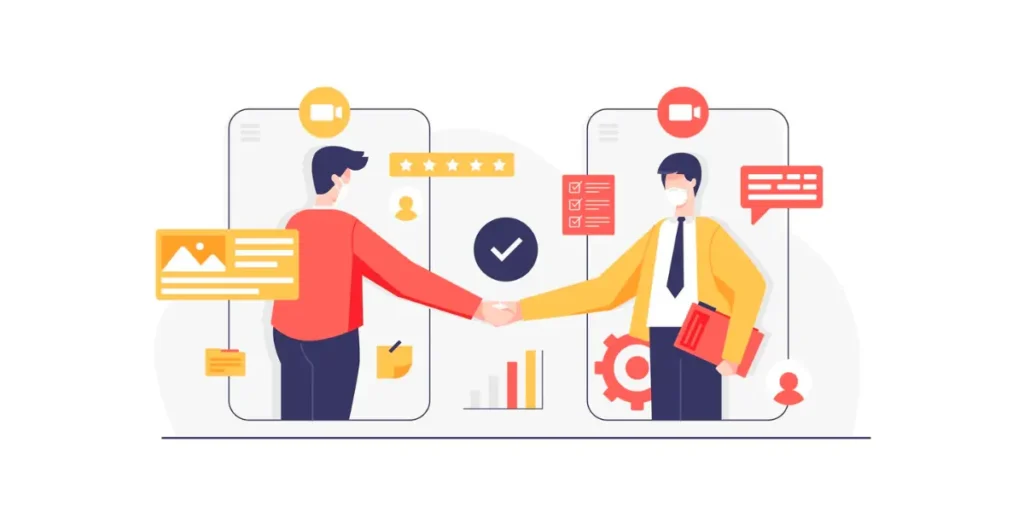
1. Choosing the right QR Code generator
Selecting the right QR Code generator is crucial for a seamless user experience and a successful campaign. Here’s what to consider:
- Free vs. Paid Options: Free generators offer basic functionality for creating QR Codes. However, paid options often provide additional features like:
- Advanced data types: Encode more complex information like vCards (digital business cards) or Wi-Fi login credentials.
- Error correction: Improves scannability even if the code is partially damaged.
- Password protection: Restrict access to the information encoded in the code.
- Analytics tracking: Gain valuable insights into the number of scans, user demographics, and even location data.
- Design Customization: Consider generators that allow for some level of customization, such as adding your logo, changing colors, or including a call-to-action frame.
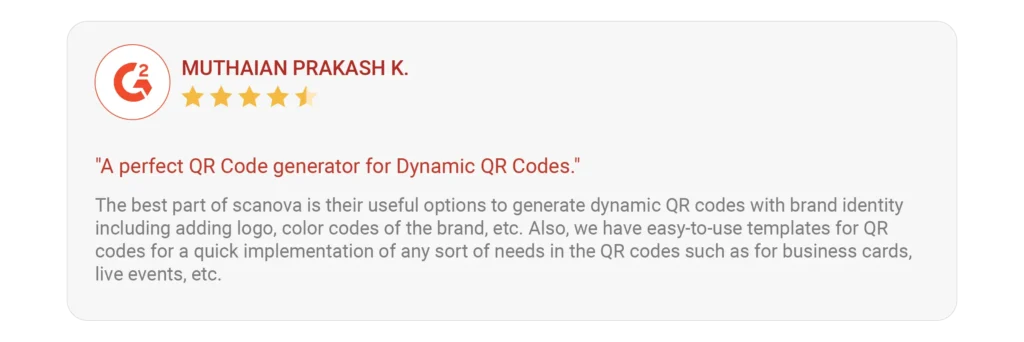
- Ease of Use: The generator interface should be user-friendly and intuitive. Opt for one that offers clear instructions and a streamlined design.

2. QR Code Security: Choosing Data Privacy
Transparency and user trust are paramount in the digital age. Always go for QR Code generators that prioritize your data privacy and security:
- Understand the Data You’re Encoding: Only encode data that is necessary for your campaign.
- Be Transparent with Users: Disclose what data you’re collecting through your QR Code and how you intend to use it.
- Comply with Data Privacy Regulations: If your campaign involves collecting user data ensure that your QR Code generator complies with standards like GDPR, SOC 2, and ISO 27001 regulations.
- Choose a Reputable Generator: Opt for generators with a strong track record of data security practices.
Understanding the Certifications:
- GDPR (General Data Protection Regulation): This is a European Union regulation that governs how personal data is collected, stored, and used. A GDPR-compliant provider ensures your data is handled with strict controls and user privacy is respected.
- SOC 2 (System and Organization Controls): A SOC 2-compliant provider demonstrates they have robust controls in place to safeguard customer data, including security, availability, processing integrity, confidentiality, and privacy.
- ISO 27001 (Information Security Management System): Developed by the International Organization for Standardization (ISO), ISO 27001 outlines a framework for establishing and maintaining an information security management system (ISMS).
- An ISO 27001-compliant provider has a systematic approach to managing information security risks, ensuring your data is protected throughout its lifecycle.
Looking for a Secure Option? Scanova, a product of Trycon, sets the bar too high when it comes to privacy. It prioritizes user privacy and adheres to GDPR, SOC 2, and ISO 27001:2013 standards. This can be a secure option for your confidential data-sharing needs.
Read more here: Trycon’s Data Security & Compliance
Big brands trust Scanova:

E. Best Practices for implementing QR Codes: Scan here for success
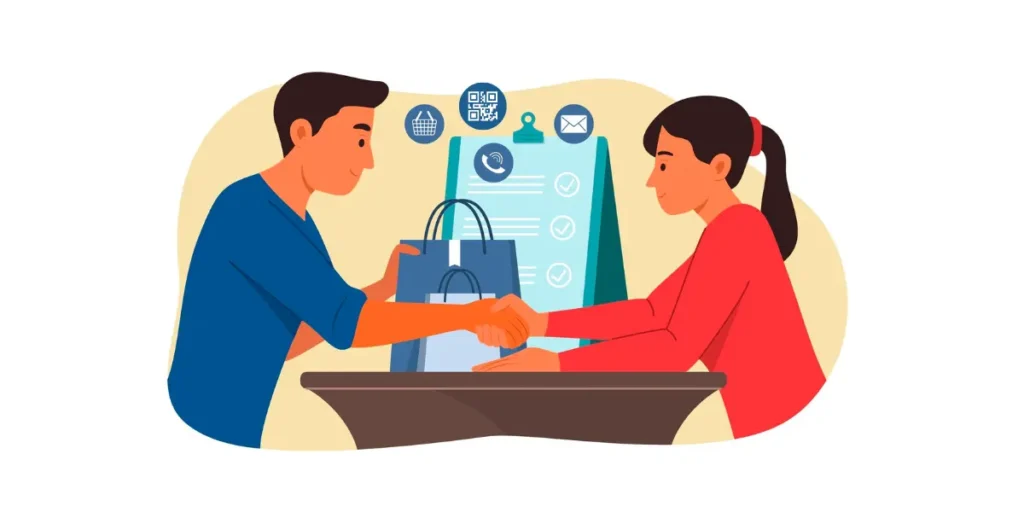
Now that you’ve seen the power of QR Codes across industries, let’s explore some key practices to ensure your QR Code campaigns are scan-worthy:
1. Designing effective QR Codes: Make them scannable and appealing
I. Choosing the right size and color
Your QR Code should be large enough to scan easily, especially on printed materials. A minimum size of 1 inch (2.5 cm) is recommended.
For optimal contrast, we recommend choosing a dark color for the foreground (the squares) against a lighter background.
II. Including a clear Call-to-Action (CTA)
Don’t leave users guessing! Next to your QR Code, include a clear and concise CTA like “Scan to Learn More,” “Unlock Exclusive Offer,” or “Get Tickets Now.”
This tells users what to expect upon scanning and incentivizes them to engage.
2. Optimizing landing pages: Where users land matters
I. Mobile-Friendly Design
Remember, most QR Codes will be scanned using smartphones. Ensure your landing page is mobile-responsive, meaning it adapts seamlessly to different screen sizes for a smooth user experience.
II. Relevant and Engaging Content
Don’t disappoint users with a generic landing page. Deliver high-quality content that aligns with the CTA on your QR Code.
This could be a detailed product description, a captivating video tour, or a downloadable discount coupon.
3. Ensuring accessibility: Not everyone scans
While QR Codes are increasingly popular, not everyone has a smartphone or the ability to scan them.
Consider offering alternative access to the information encoded in the QR Code, such as a short URL printed alongside the code.
F. Case Studies: QR Codes in Action – Scanning the Future
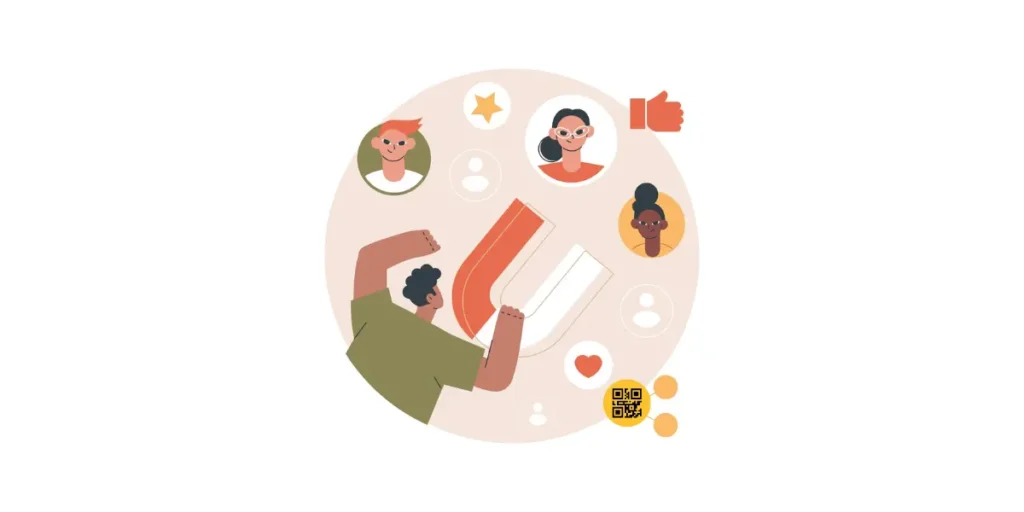
Here are some inspiring examples of how different sectors are leveraging QR Codes for impactful results:
The COVID-19 pandemic forced the hospitality industry to navigate a tricky balancing act: minimizing physical contact while still offering a smooth dining experience. Enter QR Codes, a technology that emerged as a hero for restaurants and food chains.
By placing QR Codes on tables, customers can now access digital menus with a simple scan from their smartphones.
This not only prioritizes safety by reducing physical touchpoints but also unlocks exciting possibilities like dynamic menu updates and targeted promotions.
Starbucks, a brand known for embracing new technology, is a prime example of how QR Codes can be leveraged in the hospitality industry.
Building on its established loyalty program, Starbucks has seamlessly integrated QR Codes into its marketing mix.
The brand has even partnered with magazines to spread the word about its QR Code initiatives.
This example shows how QR Codes can be more than just a digital menu solution. They offer a versatile tool for restaurants to enhance customer experience, streamline operations, and ultimately drive sales.
Another example is McDonald’s, the world’s leading fast-food chain, which has always been at the forefront of implementing creative marketing methods.
McDonald’s uses QR Codes as part of its marketing strategy for its packaging. Customers who scan the code may receive exclusive promotions, discounts, and information about new menu items.
This increased client participation and excitement throughout the eating experience. Back in 2013, McDonald’s added QR Codes to their packaging. From carry-out bags to drinking cups, all featured a QR Code.
Coca-Cola, for instance, isn’t just quenching your thirst anymore. In September 2023, they launched a limited-edition drink with AI-powered QR Codes on the packaging.
Scanning these codes took customers to a landing page where they could use their camera to see their surroundings transformed with a futuristic filter – a fun and interactive way to engage with the brand.
Pepsi isn’t just about halftime shows either. They’ve leveraged QR Codes strategically in their marketing campaigns.
Remember the Super Bowl LVI ad in 2021? The concluding screen displayed a QR Code, inviting viewers to unlock an exclusive app for sharing augmented reality photos – a fantastic way to extend the excitement beyond the game.
Welch’s Fruit Snacks took things a step further, integrating QR Codes into their CTV ad campaign in January 2023.
Viewers could scan the code to enter a contest with a chance to win prizes. This not only boosted engagement but also allowed Welch’s to gather valuable customer data through the entry process.
In Jan 2023, Volkswagen tested its upcoming electric vehicle by camouflaging it with QR Codes that redirected to Volk-swagen’s landing page-prompting users to enter their email to receive exclusive information and photos of the new model, with a share function for social media.
In Jan 2023, Indian automobile manufacturer Mahindra & Mahindra launched a print ad featuring a QR Code.
The QR Code redirected users to YouTube, where they could view the commercial and learn more about Mahindra’s CSR initiative.


These examples showcase the diverse ways brands are utilizing QR Codes to go beyond simple information sharing.
G. Future trends in QR Code usage: A glimpse into the evolving landscape

QR Codes are no passing fad. As technology continues to evolve, so too will their capabilities. Here are some exciting trends to watch in the world of QR Codes:
1. QR Codes and Augmented Reality (AR)
Imagine scanning a QR Code on a product package and being greeted by a 3D holographic animation showcasing the product in action. This is the power of QR Codes merging with AR.
Did you know? In Europe, QR Code interaction rates increased by 96% from 2018 to 2020. Source: Wifitalents
In the future, expect to see a rise in interactive AR experiences triggered by QR Codes, blurring the lines between physical and digital worlds and creating a whole new level of engagement.
2. Advancements in QR Code technology
QR Codes are constantly getting smarter. We can expect advancements like:
- Increased Data Capacity: Future QR Codes might hold even more data, allowing them to encode richer experiences like high-resolution videos or interactive games.
- Error Correction Enhancements: Improved error correction capabilities will make QR Codes even more scannable, even if partially damaged or under less-than-ideal lighting conditions.
- Dynamic QR Codes: These codes can update their content in real time, offering endless possibilities for dynamic marketing campaigns or personalized experiences.
3. The role of QR Codes in omnichannel marketing
Omnichannel marketing strives to create a seamless customer experience across all touchpoints.
QR Codes will play a vital role in this by bridging the gap between physical and digital marketing channels.
Imagine seeing a captivating billboard with a QR Code, scanning it to access a detailed product page, and then completing the purchase online – all within a smooth, cohesive journey.
H. FAQs: QR Codes for engagement

1. What are QR Codes, and how do they work?
QR Codes (Quick Response codes) are square-shaped barcodes that store information.
Users scan them with their smartphone cameras to access websites, videos, images, or even hidden messages.
2. How can QR Codes help with engagement?
QR Codes bridge the gap between the physical and digital worlds. They offer a seamless way to engage users by providing instant access to additional information, interactive experiences, or exclusive content.
3. What are some examples of using QR Codes for engagement?
- Retail: Access product details, reviews, or promotions with a scan.
- Restaurants: View digital menus, place orders, or leave feedback.
- Events: Get tickets, access interactive maps, or participate in games.
- Education: Explore supplemental learning materials or access virtual tours.
4. What are the benefits of using QR Codes for engagement?
- Increased user engagement: Offer more immersive and interactive experiences.
- Measurable results: Track the number of scans to gauge campaign effectiveness.
- Cost-effective: A relatively inexpensive way to add a digital layer to marketing materials.
- Easy to use: No app downloads are required, just a simple scan with a smartphone camera.
5. How can I create a QR Code?
Many free and paid online QR Code generators are available. Simply choose the type of information you want to encode (website URL, text message, etc.) and generate the code.
6. What design elements are important for effective QR Codes?
- Size: Ensure the code is large enough to scan easily (minimum 1 inch recommended).
- Color: Use high contrast between foreground and background (dark squares on a light background).
- Call to action: Include a clear message like “Scan to Learn More” next to the code.
7. Where can I use QR Codes for engagement?
QR Codes can be used on a variety of marketing materials, including:
- Print ads (magazines, posters, billboards)
- Packaging (product labels, boxes)
- Business cards
- Flyers and brochures
- Signage and displays
8. What are some things to consider when using QR Codes?
- Mobile-friendly landing page: Ensure the content users access upon scanning is optimized for mobile devices.
- Data privacy: Comply with data privacy regulations when collecting user information through QR Codes.
- Accessibility: Consider alternative ways to provide information for users who can’t scan codes.
9. How can I track the effectiveness of my QR Code campaign?
Some QR Code generators offer analytics tools that track the number of scans, user location, and scan time.
UTM parameters can also be added to URLs encoded in QR Codes for further tracking in analytics platforms.
10. Will QR Codes become outdated in the future?
The rise of Augmented Reality (AR) could potentially integrate QR Codes seamlessly with physical environments, creating even more engaging experiences. As technology evolves, QR Codes might transform rather than become obsolete.
Conclusion
From their humble beginnings in the automotive industry to their current role as marketing powerhouses, QR Codes have come a long way.
With the right strategy, QR Codes can be a game-changer for engagement.
So, get creative, embrace the possibilities, and scan your way to a future of deeper customer engagement!

